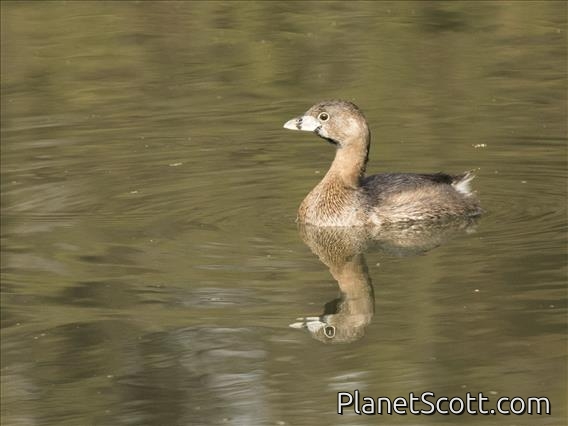Pied-billed Grebe (Podilymbus podiceps)

Pied-billed Grebe (Podilymbus podiceps)

Pied-billed Grebe (Podilymbus podiceps)

Pied-billed Grebe (Podilymbus podiceps)



×




Pied-billed Grebe (Podilymbus podiceps)

Pied-billed Grebe (Podilymbus podiceps)

Pied-billed Grebe (Podilymbus podiceps)
About Pied-billed Grebe (Podilymbus podiceps)
- Kingdom: Animals
- Phylum: Chordates
- Class: Birds
- Order: Pelicans
- Family: Grebes
The pied-billed grebe is a species of the grebe family of water birds primarily found in ponds throughout the Americas.
Source: Wikipedia
Trips
Visits
-
2005-10-15
Don Edwards National Wildlife Refuge - Alviso, United States of America -
2006-02-16
Lake Merced , United States of AmericaNorth Lake Merced, just off a pier on the southwestern shore. -
2007-01-25
Heron's Head Park, United States of America -
2007-04-11
San Diego Estuary, United States of America -
2008-02-17
San Jose del Cabo - Estuary, Mexico -
2009-10-01
Crissy Field, United States of America -
2010-01-03
Sacramento National Wildlife Refuge, United States of America -
-
2012-07-10
Arrowwood NWR, United States of America -
2012-07-12
Yellowstone National Park, United States of America -
2012-09-19
Golden Gate Park - North Lake, United States of America -
2012-09-30
Golden Gate Park - Stow Lake, United States of America -
2012-12-16
Lake Merced , United States of America -
2013-03-17
Lake Merced , United States of America -
2013-03-23
Coyote Point County Park--harbor and marsh, United States of America -
2013-04-14
Austin, United States of America -
2013-04-17
Brazoria NWR (UTC 108), United States of America -
2013-04-19
Anahuac NWR (UTC 049), United States of America -
2013-09-07
Mountain Lake, United States of America -
2013-11-29
Lake Merced , United States of America -
2014-01-21
Jimani, Dominican Republic -
2014-02-15
Lake Merced , United States of America -
2014-02-16
Golden Gate Park - North Lake, United States of America -
2014-02-22
Santa Fe Grade, United States of America -
2014-06-15
Golden Gate Park - North Lake, United States of America -
2014-09-23
Redwood Valley, United States of America -
2014-12-21
Arrowhead Marsh, United States of America -
2015-01-03
Mendota Wildlife Area, United States of America -
-
-
-
-
-
-
-
-
-
-
-
-
-
-
-
-
-
-
-
-
-
-
-
-
-
-
-
-
-
-
-
-
-
-
-
-
-
-
-
-
-
-
-
-
-





